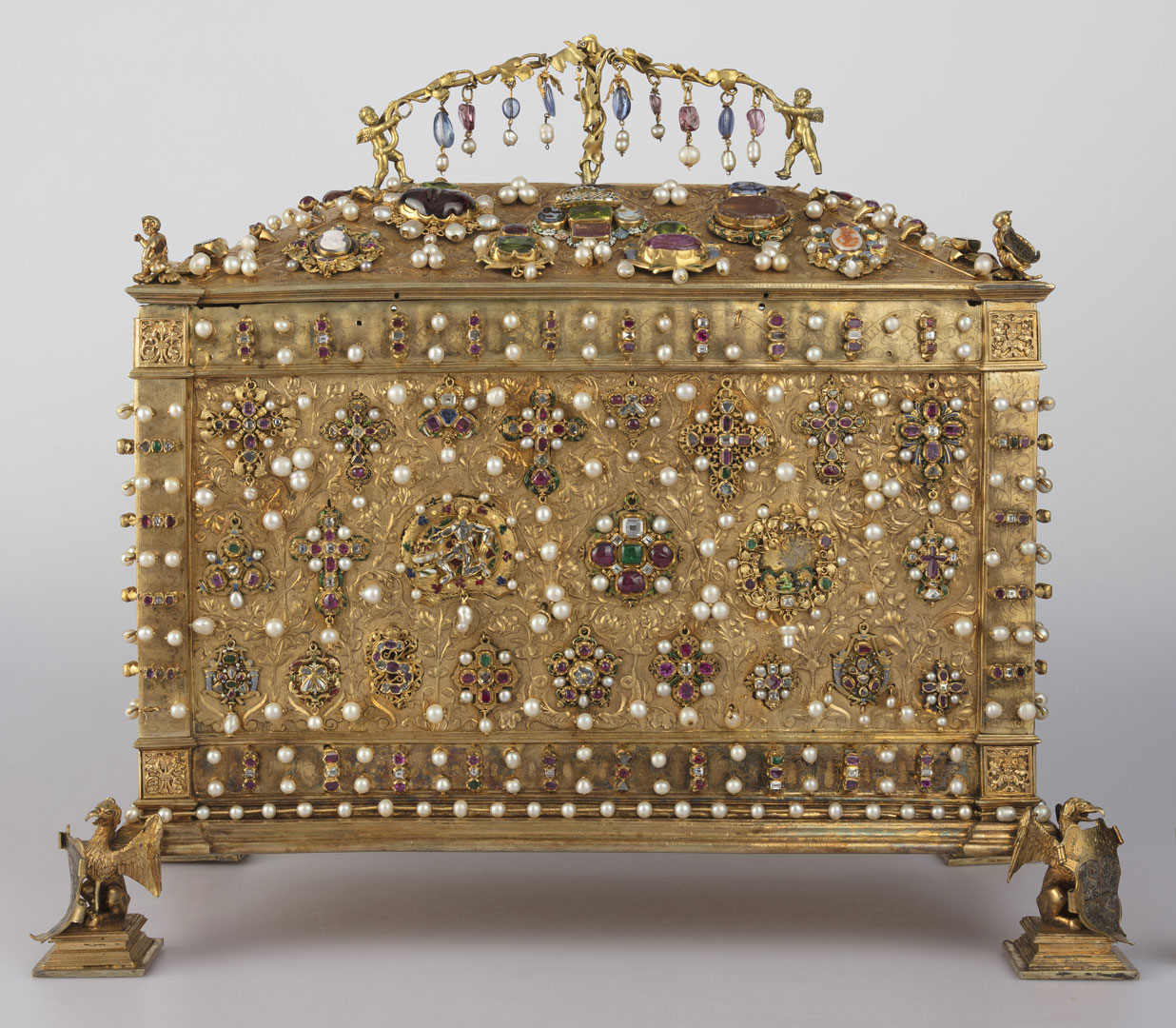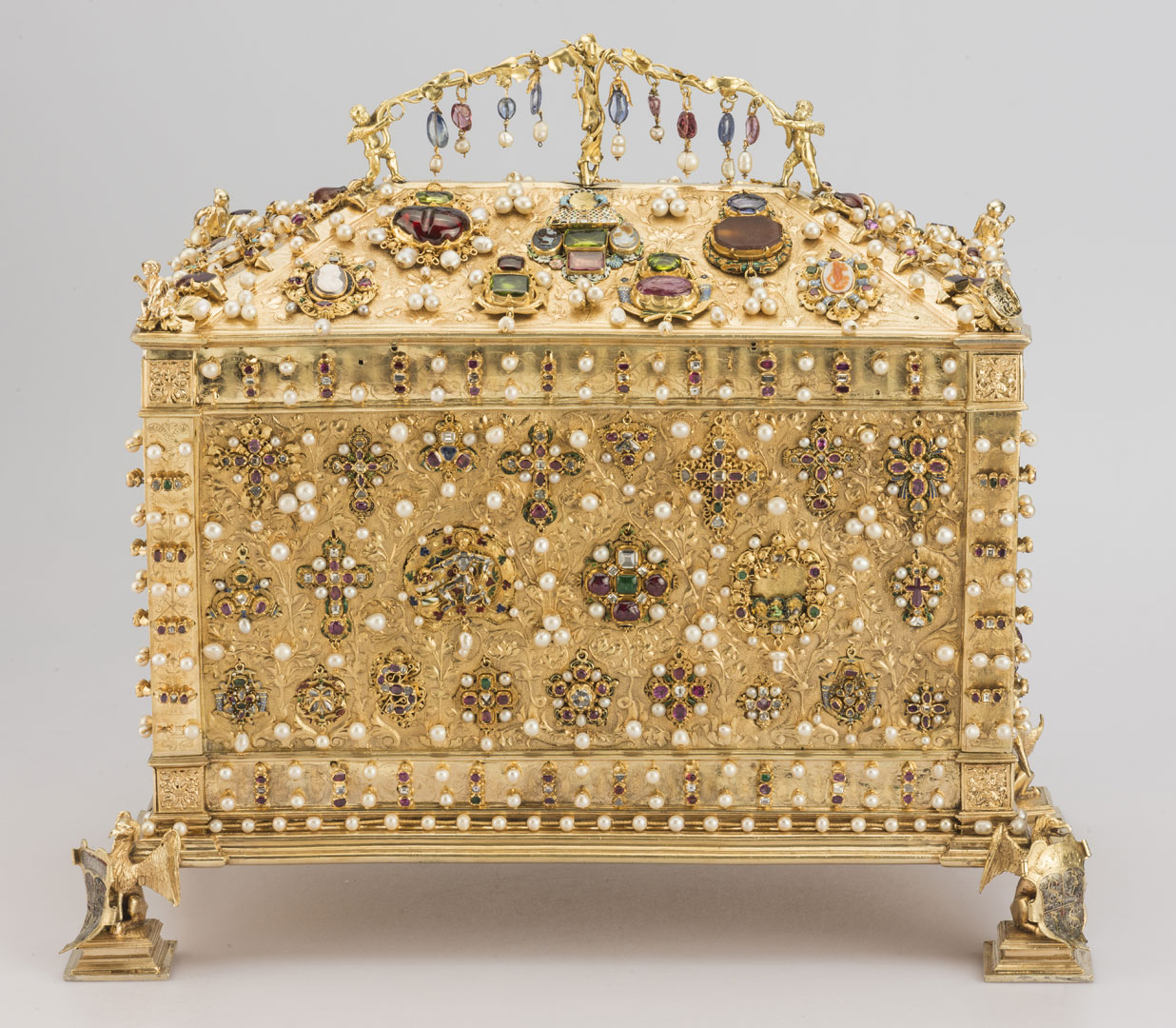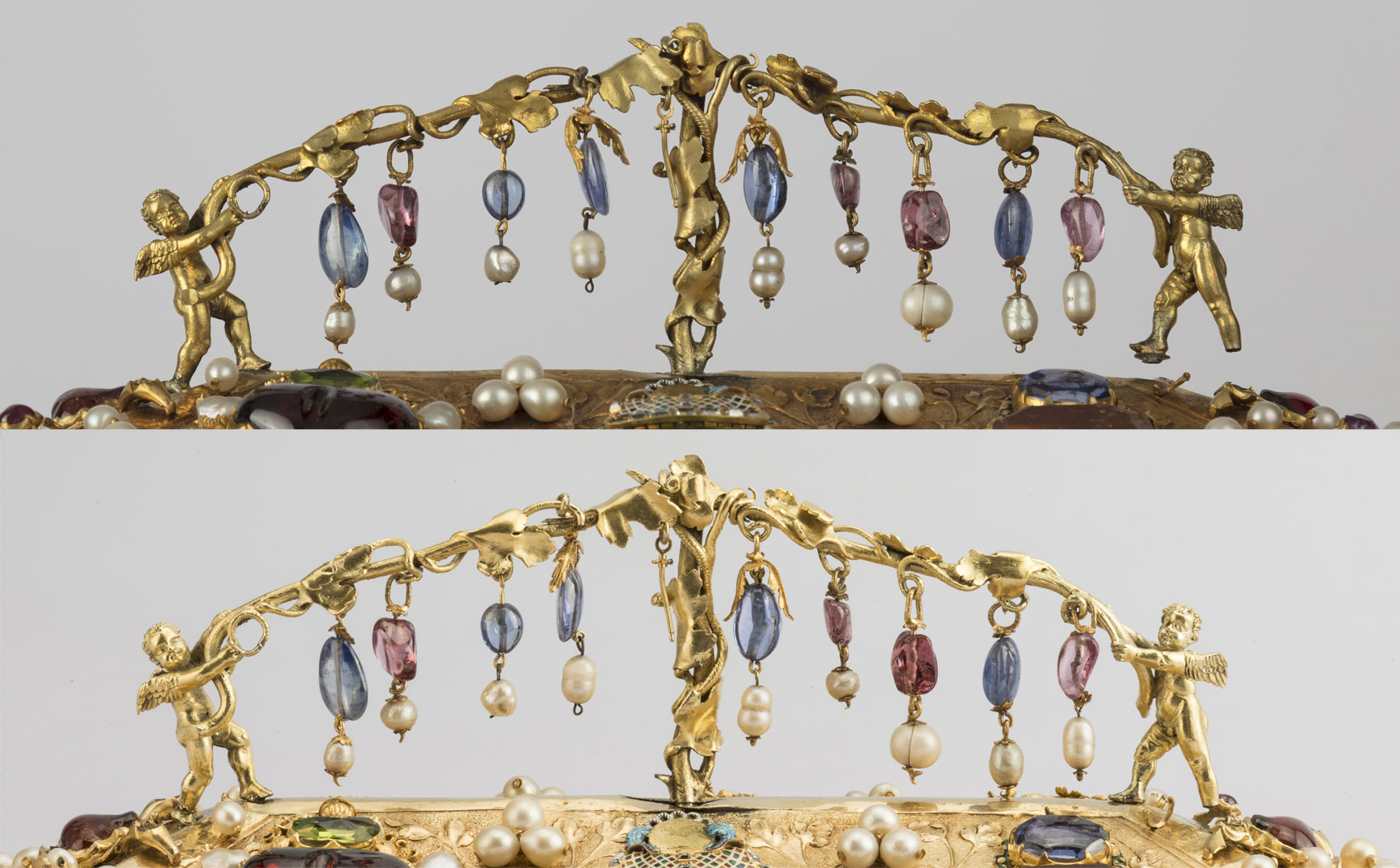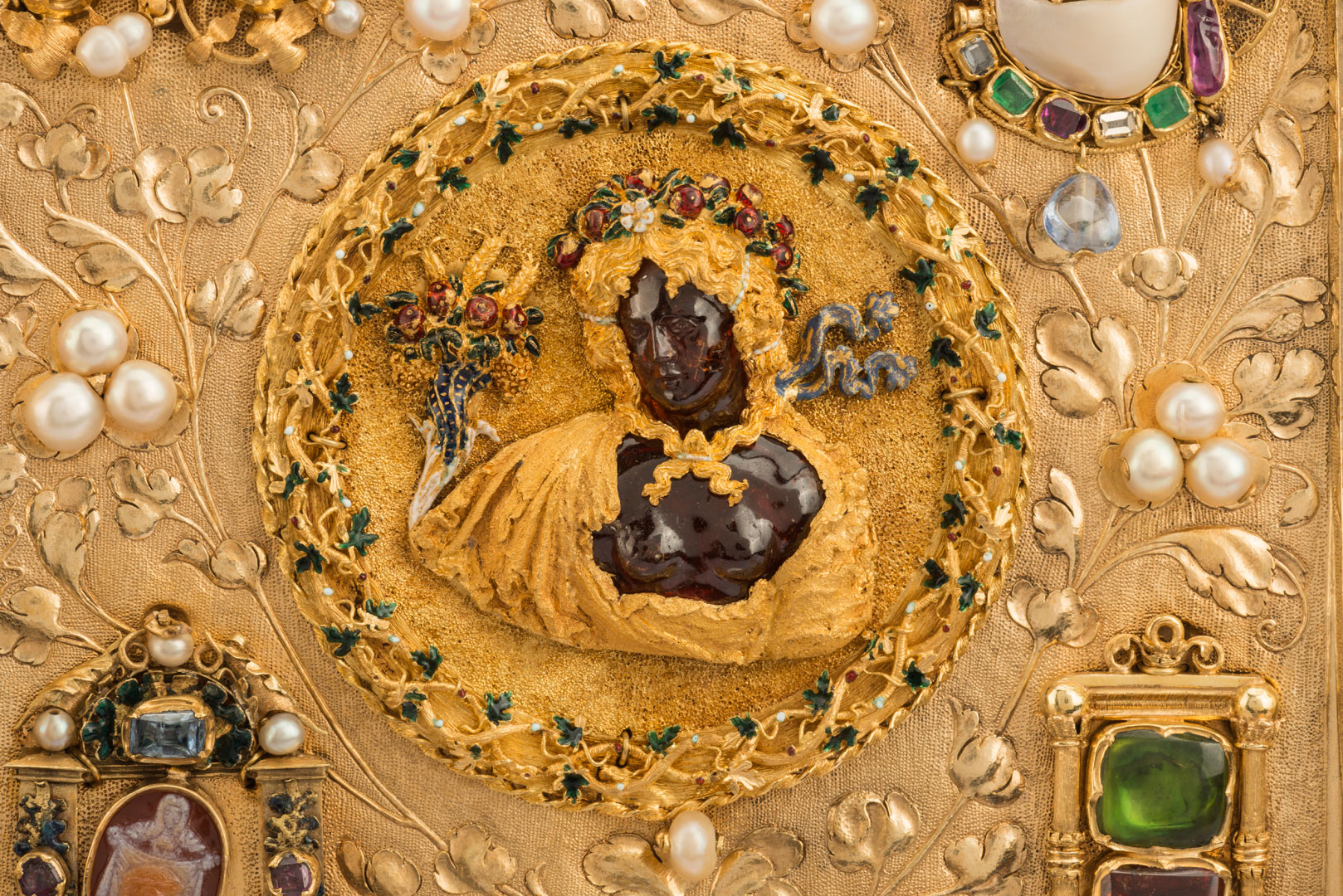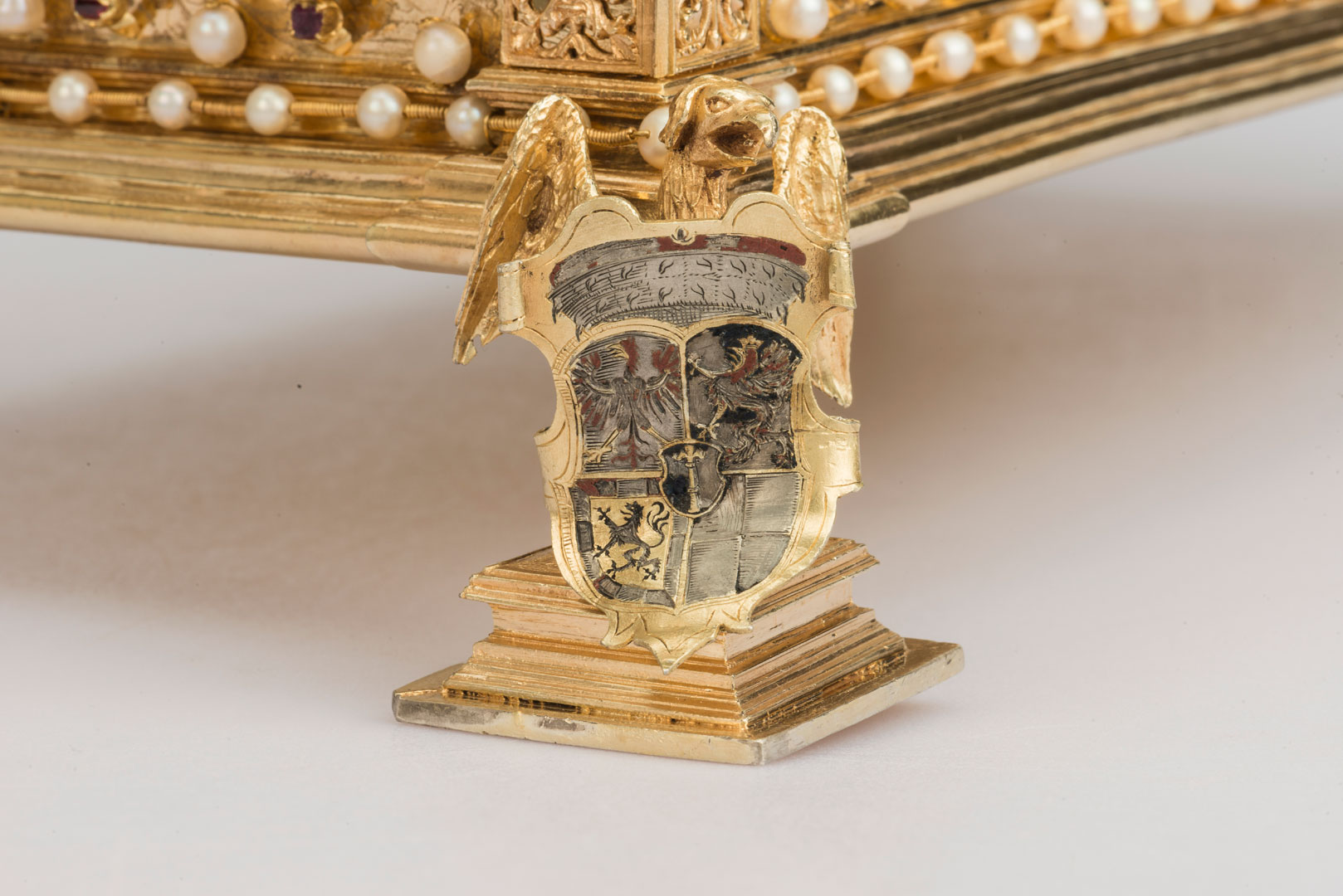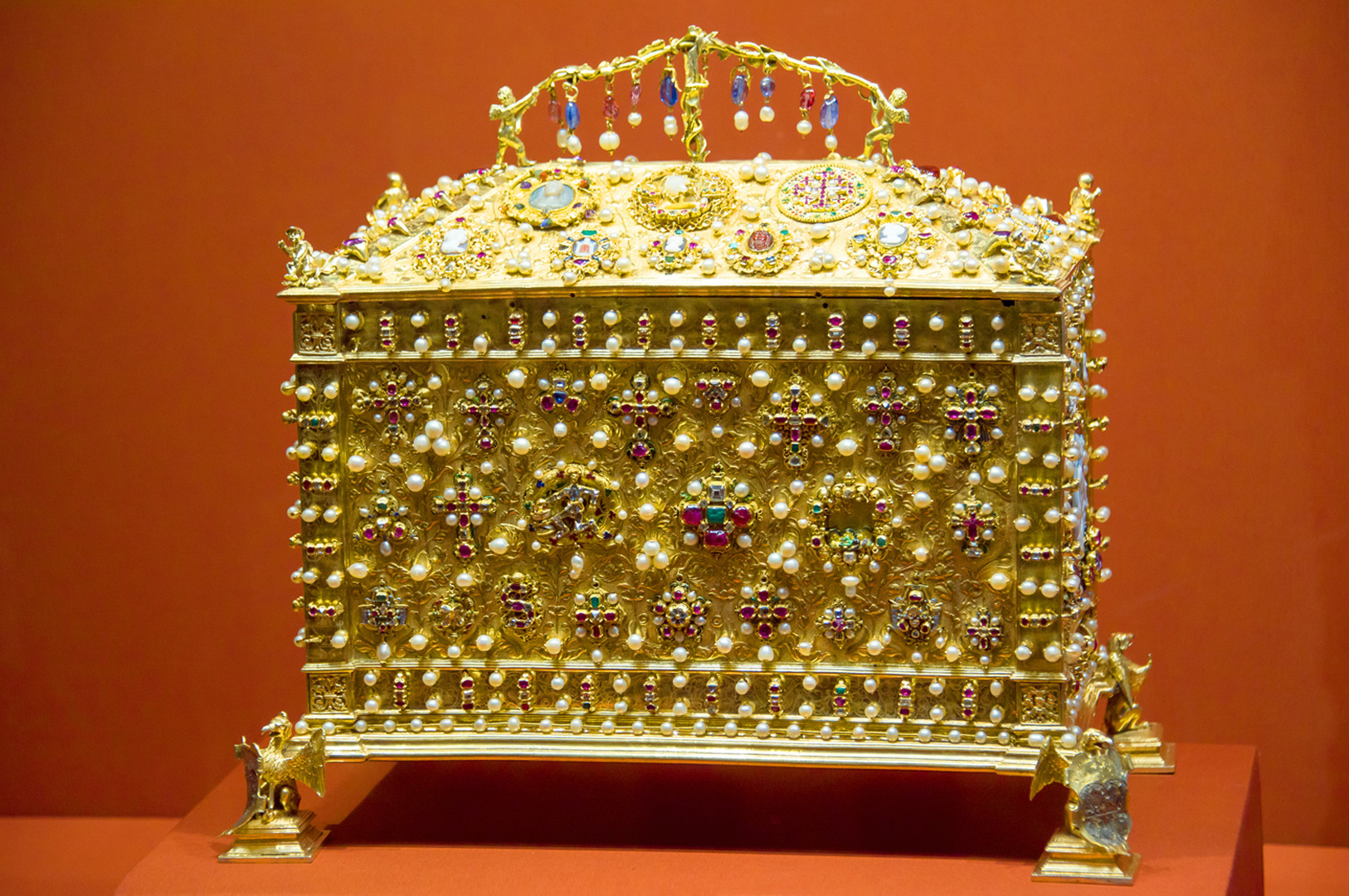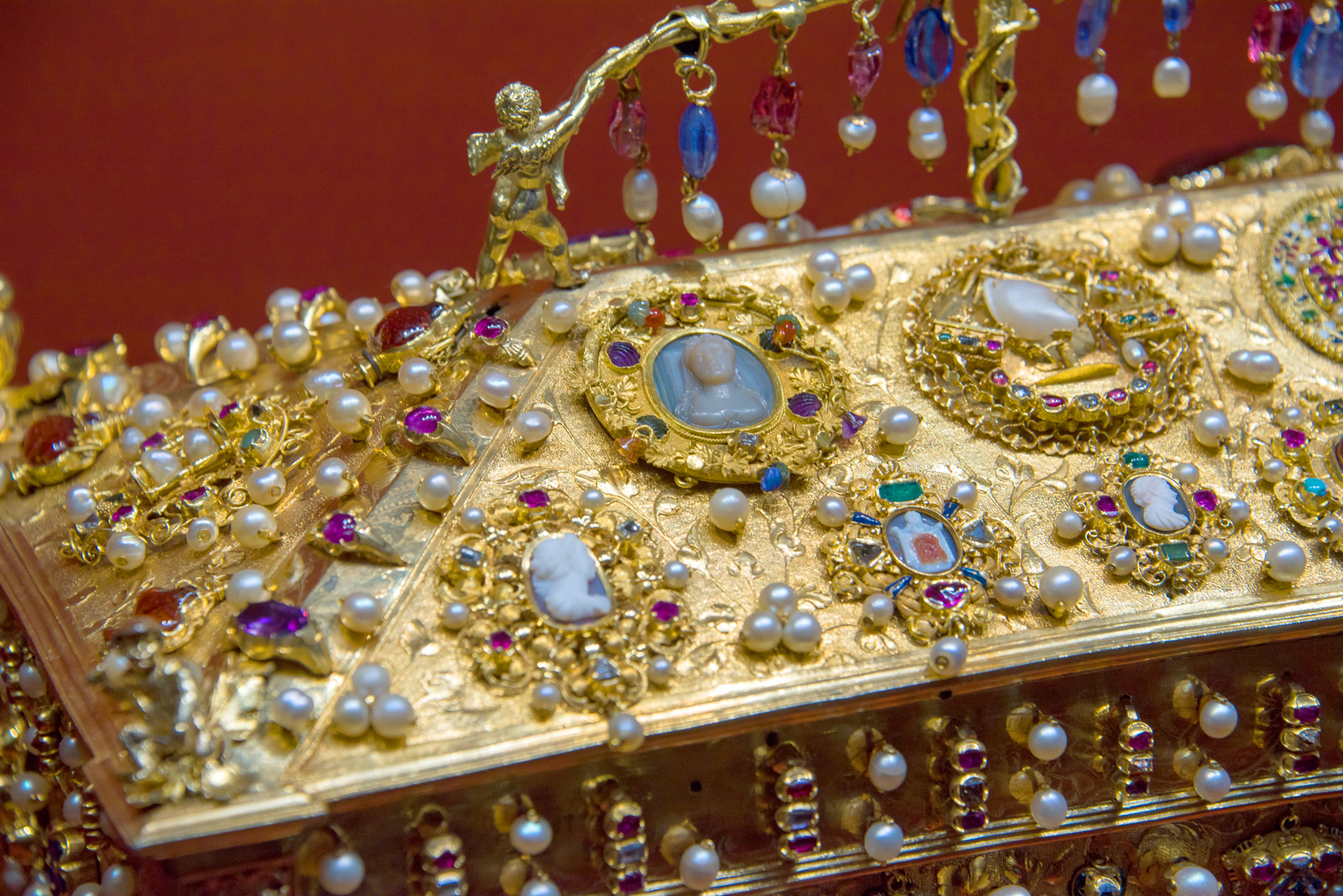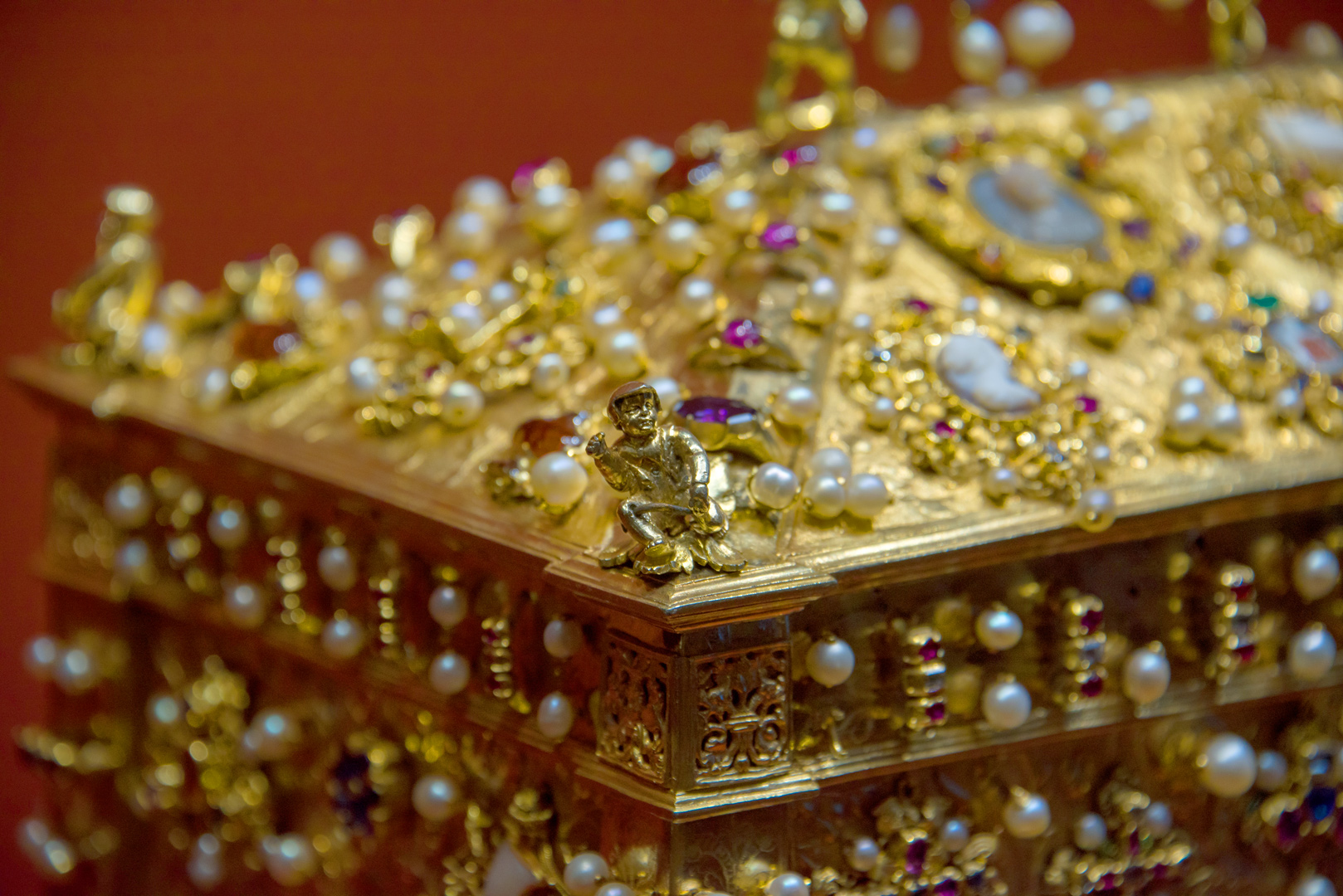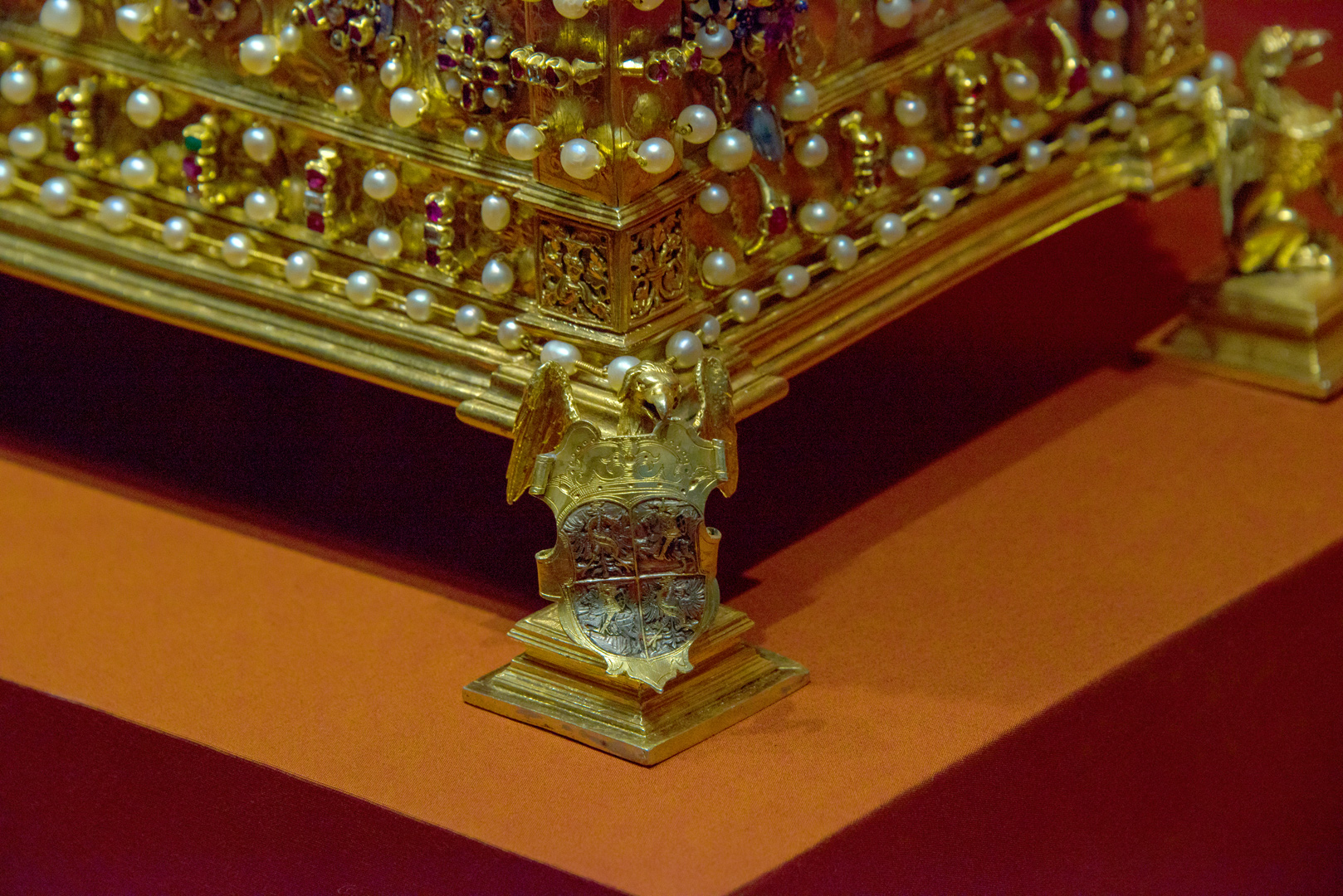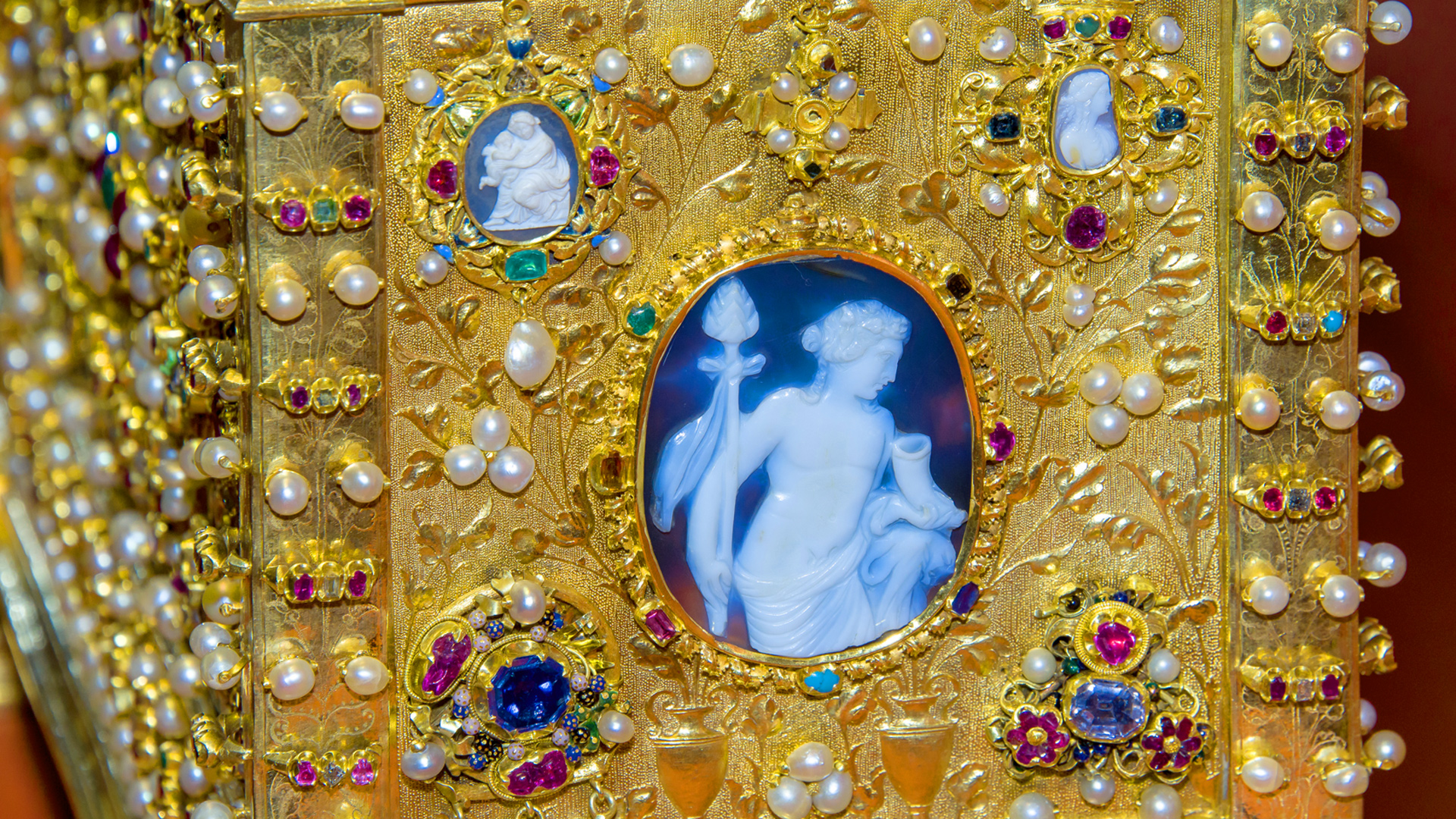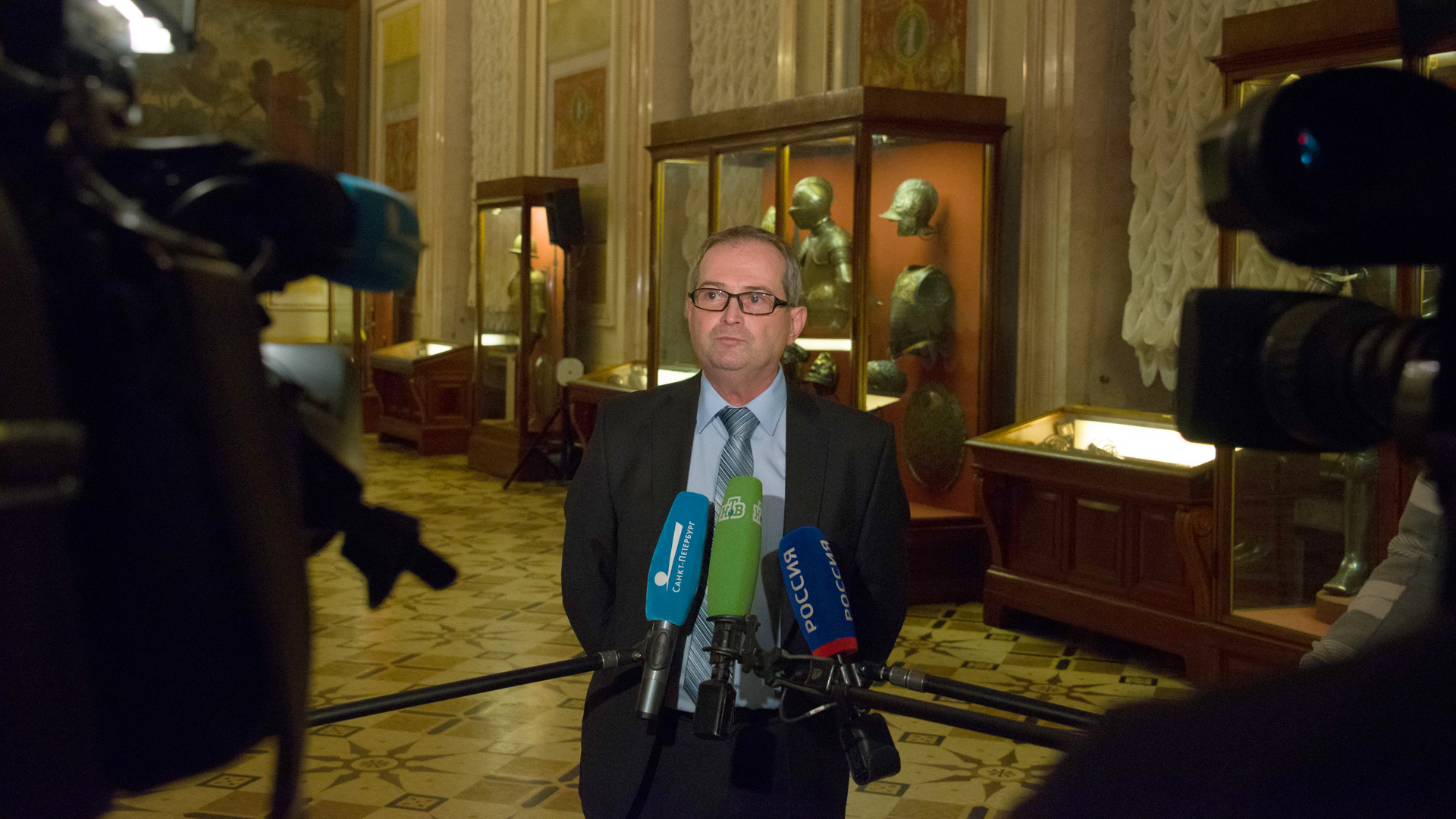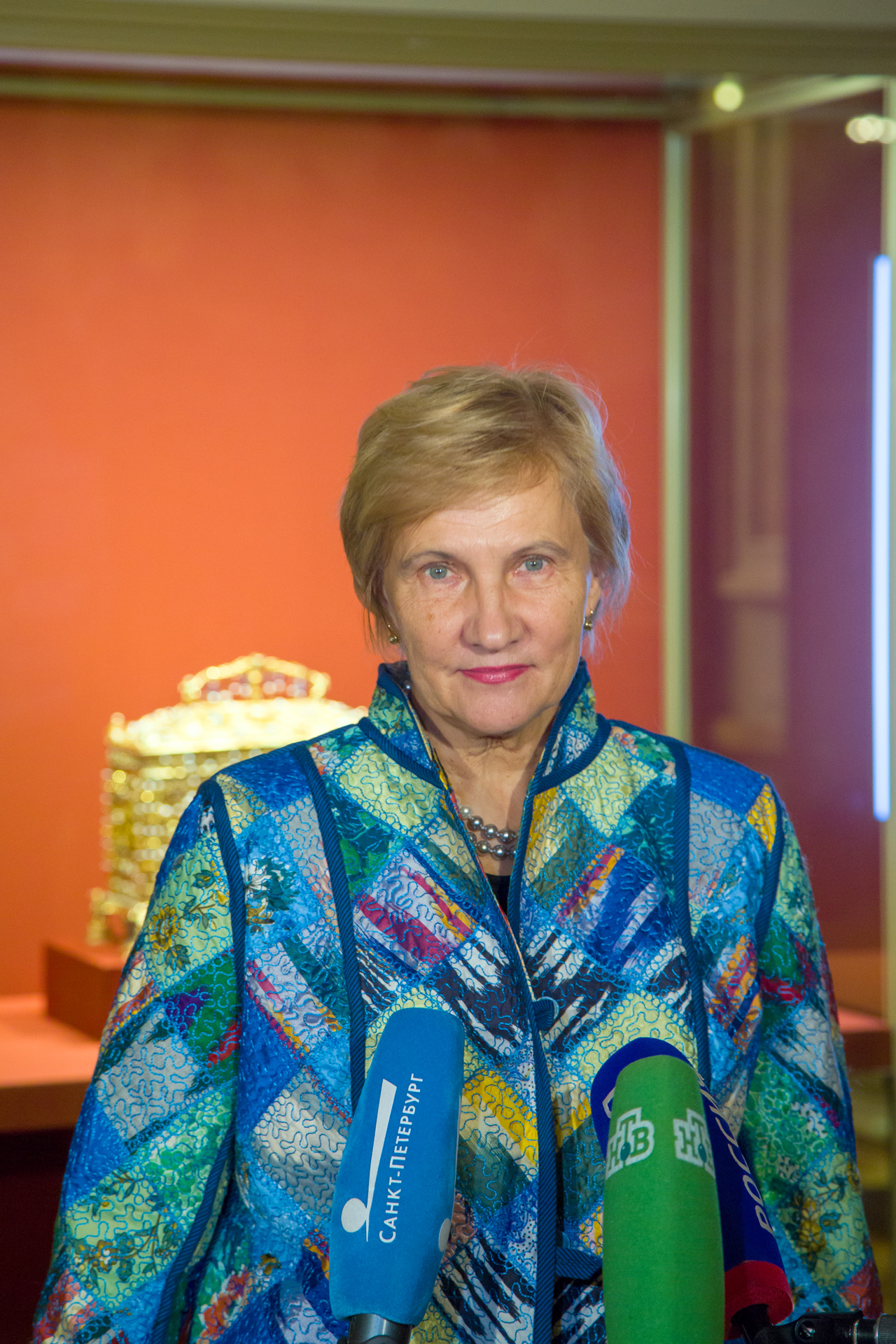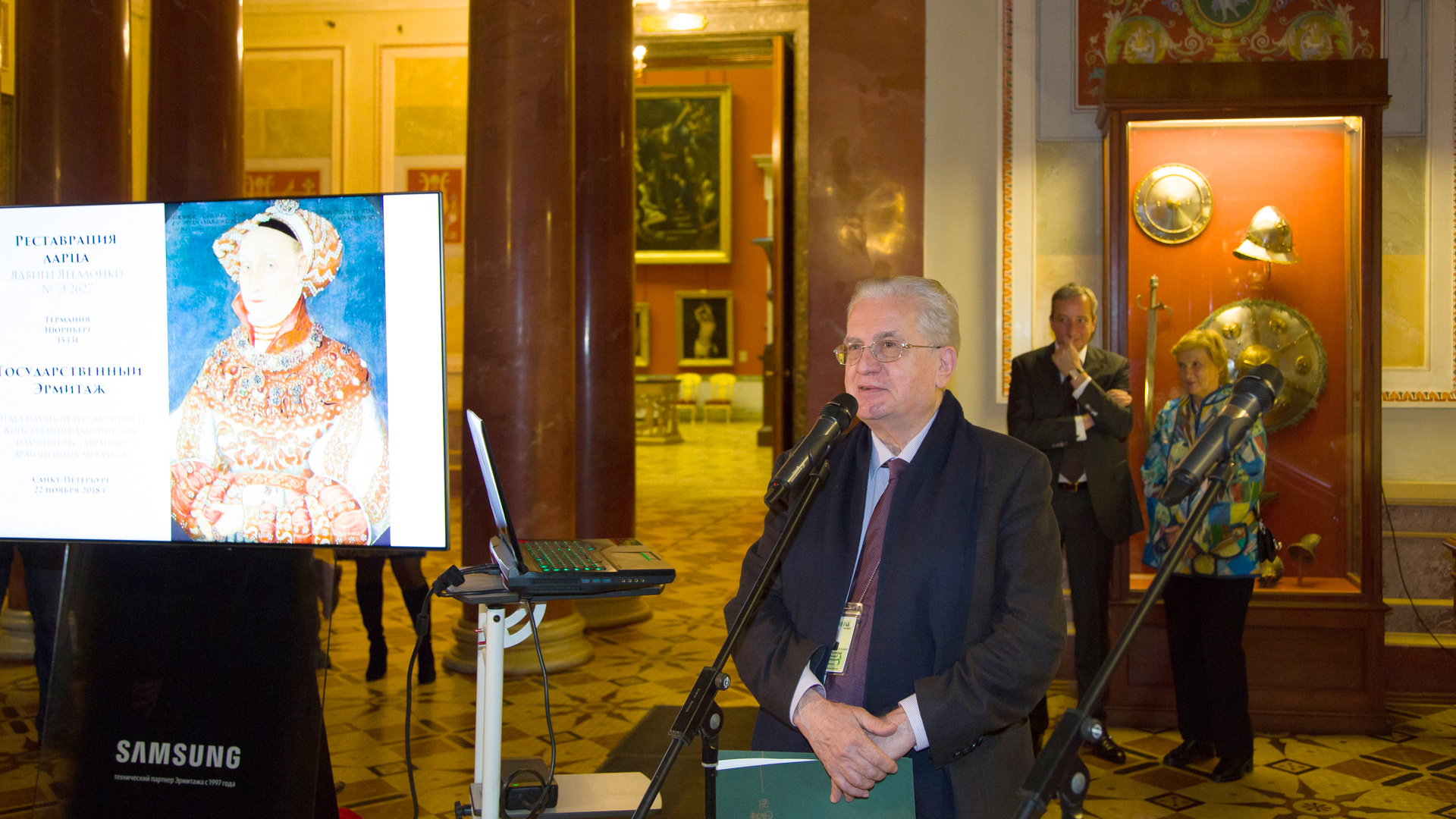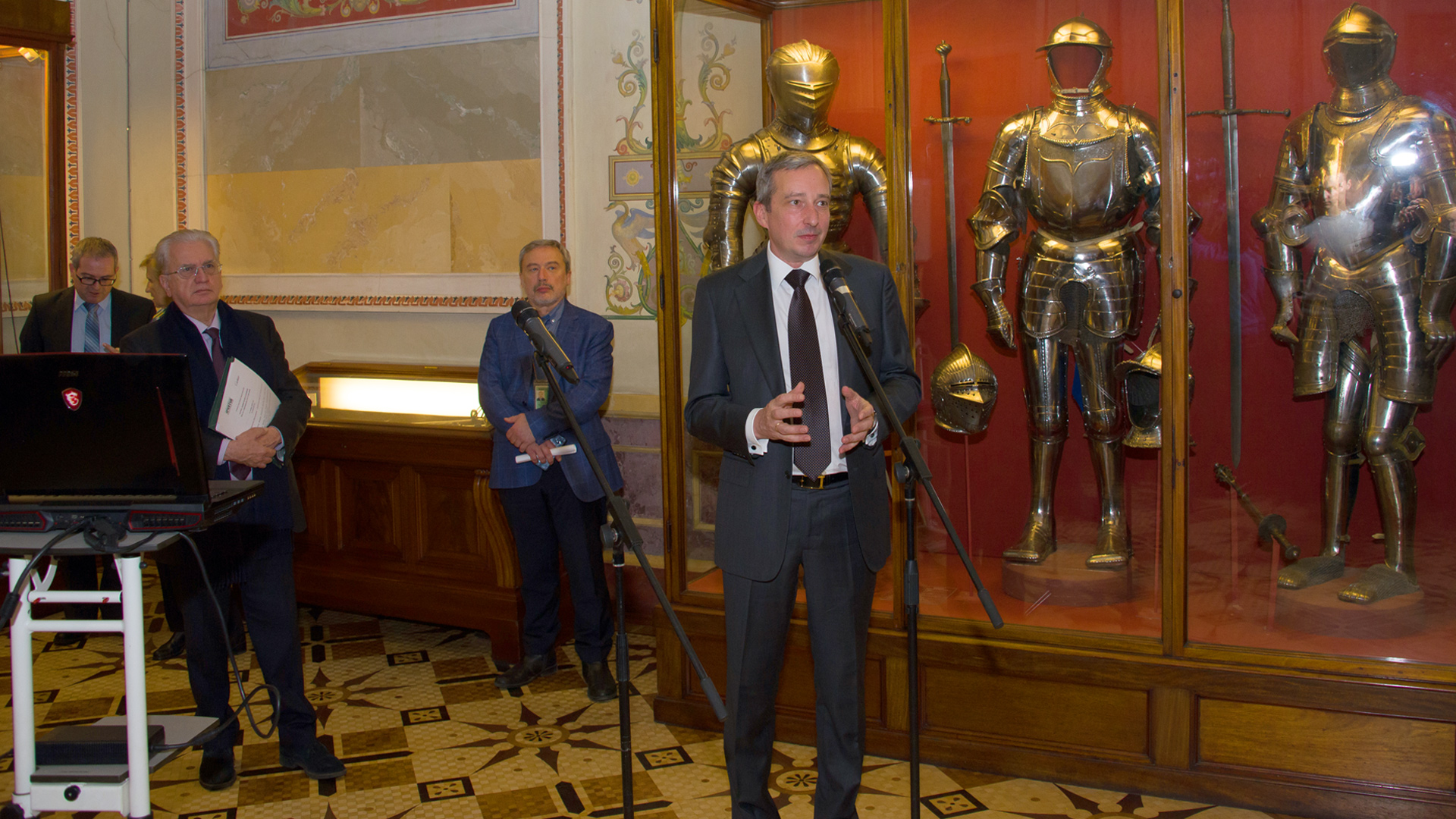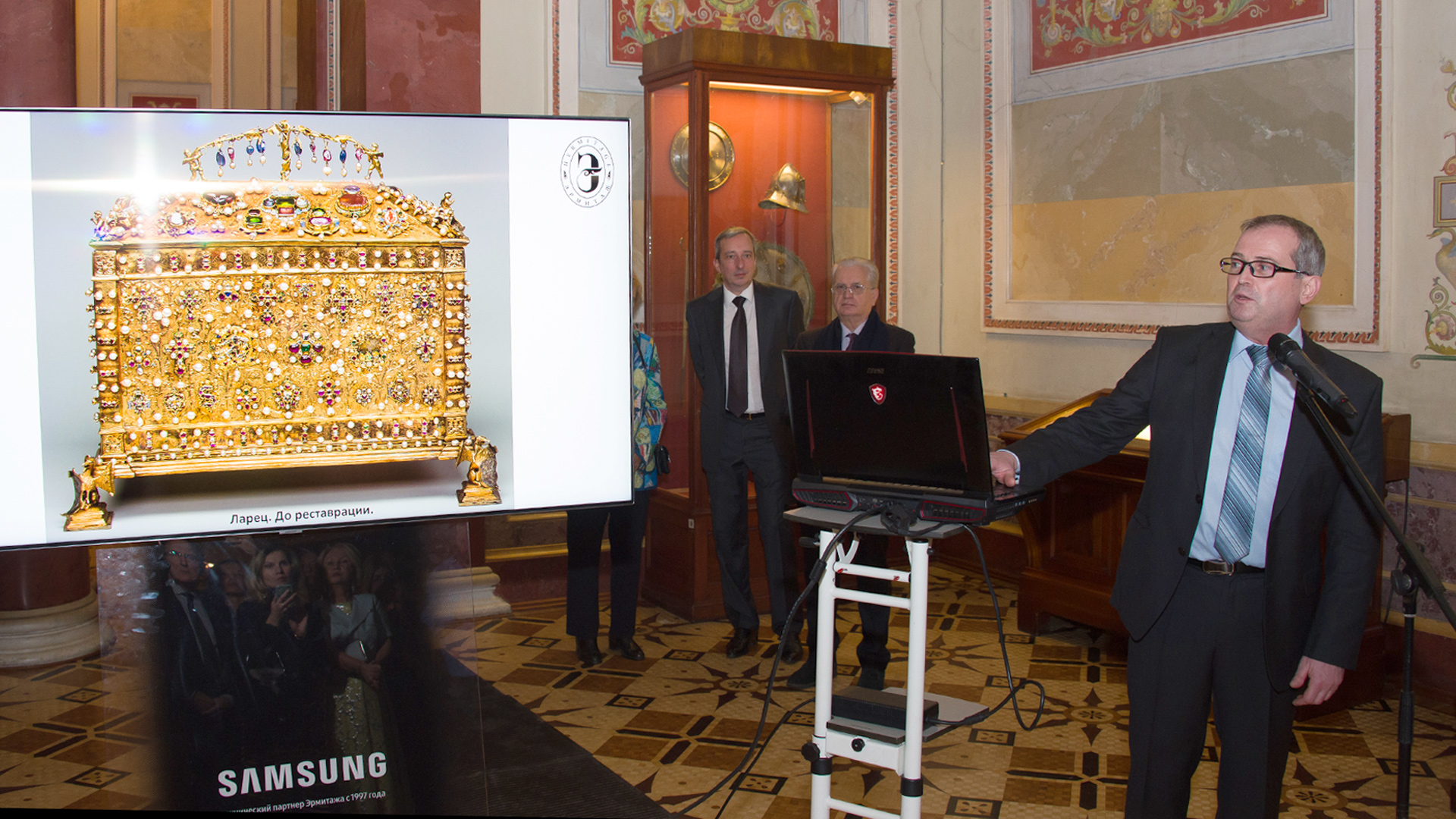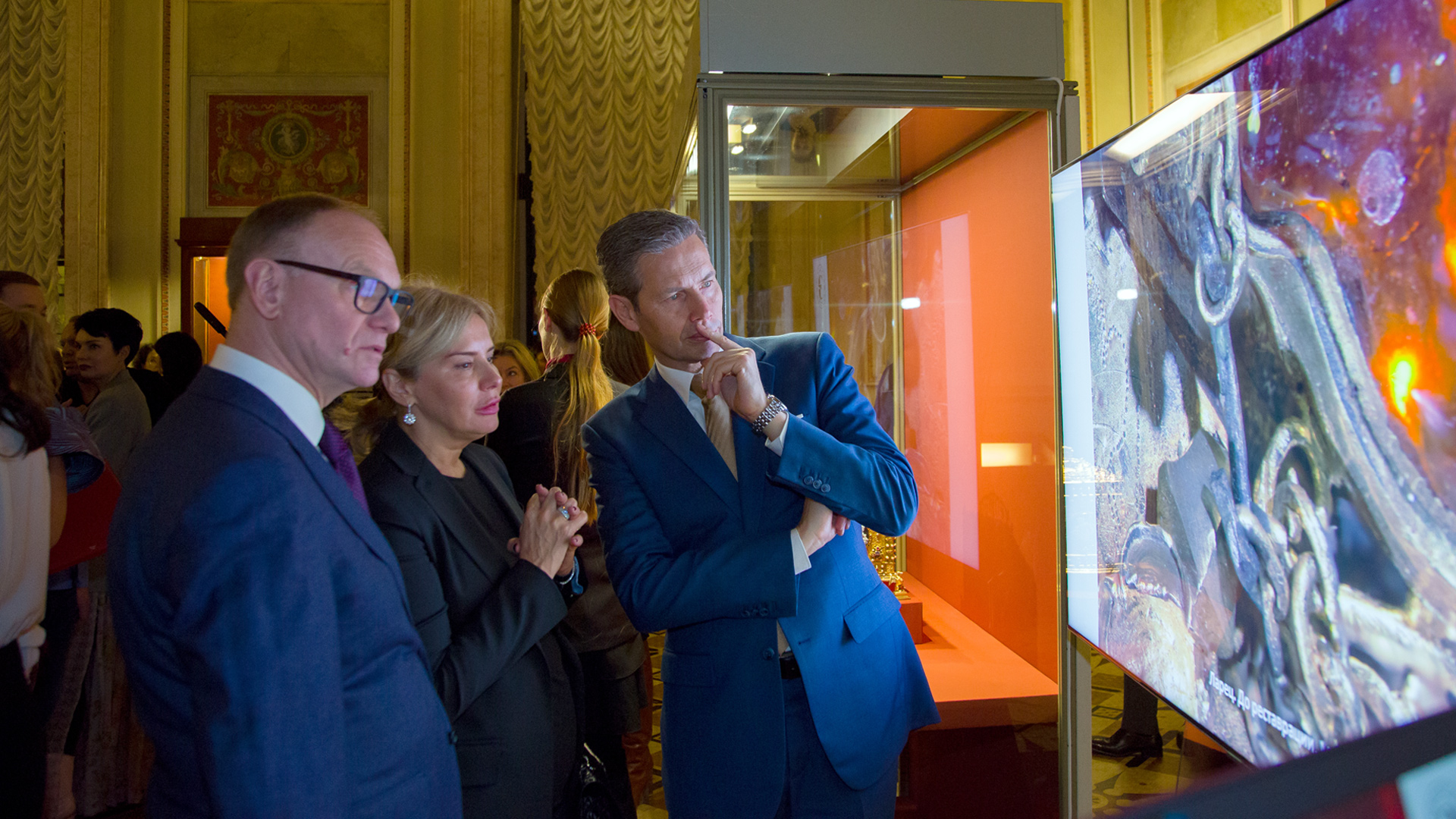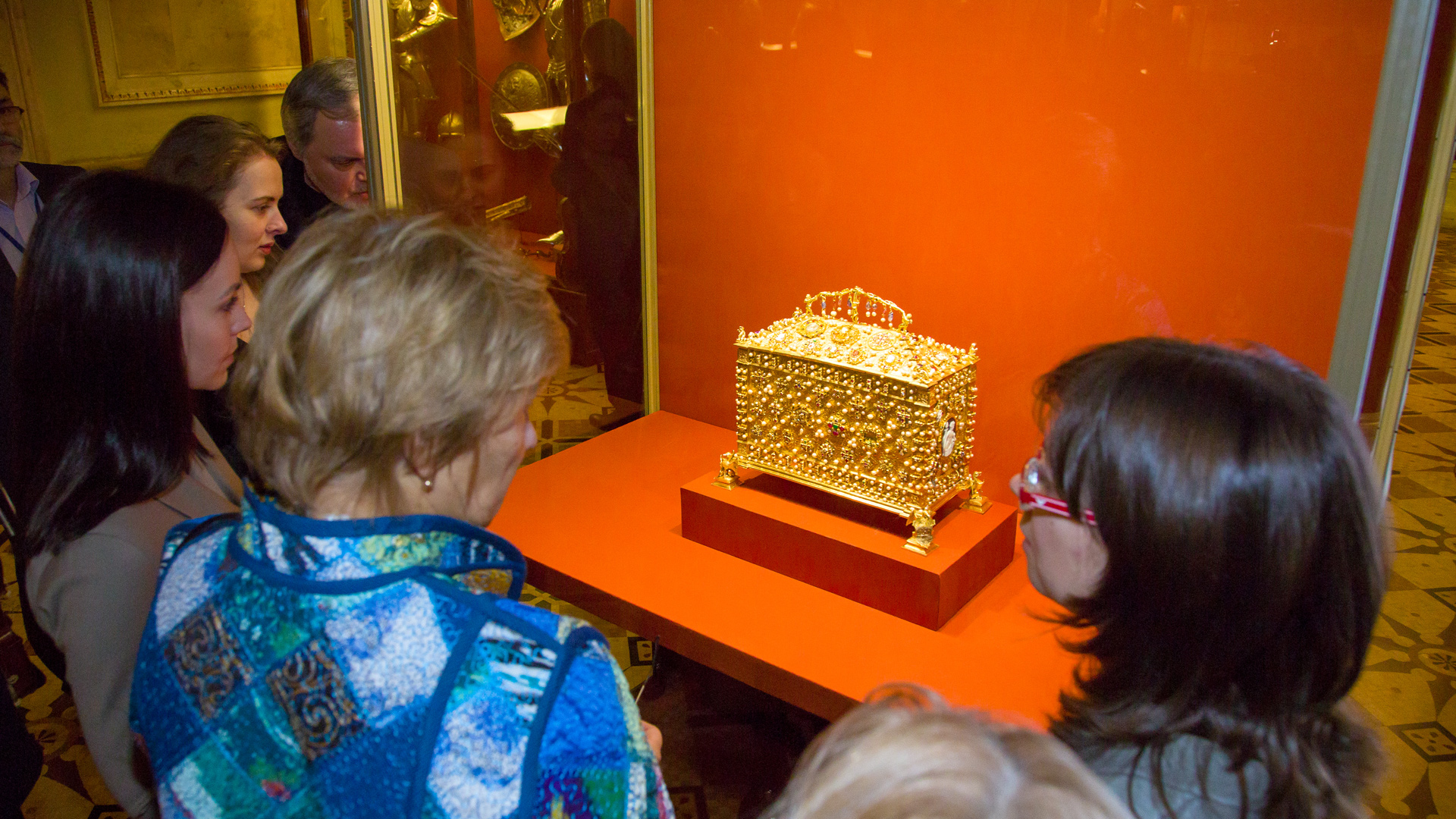The Casket of Hedwig Jagiellon. On the Completion of the Restoration
- 1 / 17
- 2 / 17
- 3 / 17
- 4 / 17
- 5 / 17
- 6 / 17
- 7 / 17
- 8 / 17
- 9 / 17
- 10 / 17
- 11 / 17
- 12 / 17
- 13 / 17
- 14 / 17
- 15 / 17
- 16 / 17
- 17 / 17
On 22 November 2018, the Knights’ Hall of the New Hermitage was the setting for the presentation of the Casket of Hedwig Jagiellon after a restoration that has been carried out with the support of the House of Cartier.
The joint project of the State Hermitage and the jewellery and watch House of Cartier was carried out by the Laboratory for the Scientific Restoration of Precious Metals belonging to the Hermitage’s Department of Restoration and Conservation.
Participating in the official ceremony were Mikhail Borisovich Piotrovsky, General Director of the State Hermitage; Arkady Igorevich Izvekov, General Director of the Cartier salon in St Petersburg; Olga Georgiyevna Kostiuk, head of the Hermitage’s Department of Western European Applied Art; and Igor Karlovich Malkiel, head of the Laboratory for the Scientific Restoration of Precious Metals.
“We are presenting the Casket of Hedwig Jagiellon. This is one of the Hermitage’s chief exhibits, full of romance and beauty,” Mikhail Piotrovsky said, as he welcomed the guests. “Today we are pleased to be giving you the opportunity to admire once again the skill of the jewellers of the past and the skill of the restorers of our own time, the generosity of Cartier and their correct choice about who to collaborate with and in what sphere.”
“This is our third project with the Hermitage,” Arkady Izvekov said. “I sense a tradition in the making. We very much wanted to celebrate the tenth anniversary of our projects. Because for us it is not simply a great joy to see objects reborn, but this is also an opportunity to repay our debt to the State Hermitage and to this amazing city in which we live.”
Olga Kostiuk spoke about the history of the casket that is believed to have been part of the dowry of Hedwig (Jadwiga), the daughter of King Sigismund I of Poland, a member of the Jagiellon dynasty, who in 1535 married Joachim II, Elector of Brandenburg. It seems probable that the casket arrived in Russia after the marriage in 1711 of Peter the Great’s son Alexei to Sophie Charlotte of Wolfenbüttel as part of the dowry of the Princess, who was a direct descendant of Hedwig Jagiellon.
A variety of jeweller’s techniques was used to decorate the casket: chasing, engraving, pouncing and gilding. The feet were made in the shape of gryphons, two of which hold shields carrying the arms of the Elector of Brandenburg and the King of Poland. The coats of arms, the surviving mark of the city of Nuremberg and the engraved date – 1533 make it possible to number the casket among the finest works produced by south German jewellers in the 16th century. The decorative plates that almost completely cover its surface are particularly striking. Each of them is unique and embellished with precious stones that vary in their artistic merits and the way they were finished. The craftsman combined stones that had been ground and polished, drilled and faceted: cabochons, rose-cut, table-cut, pyramid-cut and other types.
Igor Malkiel presented the results of the researches and restoration work. To make the time-blackened casket dazzlingly beautiful again, a range of restoration measures were carried out. Soiling was removed from the surface of the casket; the gilding was partially restored; the settings of the precious stones were reinforced. A millisecond laser was used to mend gaps and cracks in the carcass and the metal decoration. The wooden lining was cleaned of soiling and impregnated with an alcoholic solution of shellac with wax that strengthens the structure of the wood and protects the surface from cracking and chipping. The enamels were impregnated with a polymer; deformation was corrected and the traces of multiple restorations were removed.
Soon this unique exhibit will once again adorn the display of the Hermitage’s Treasure Gallery.
